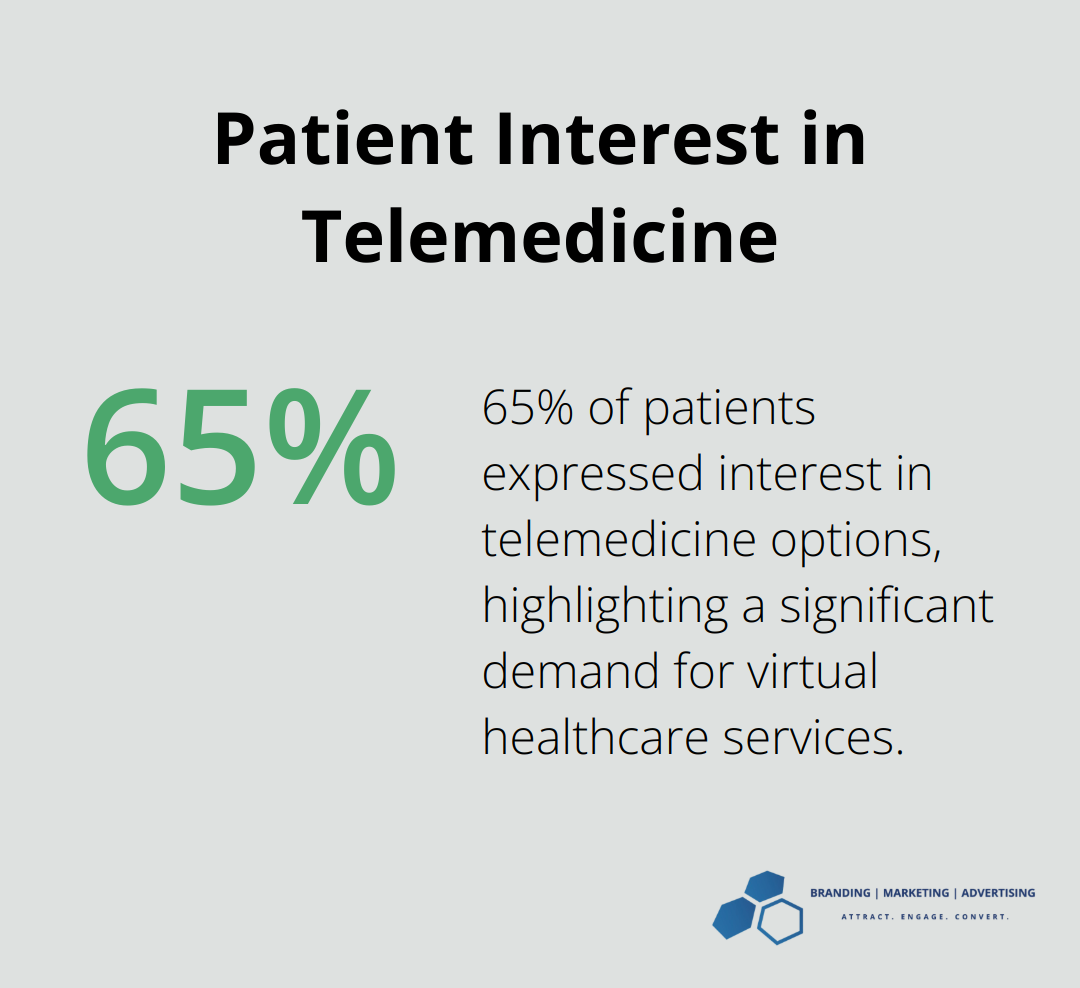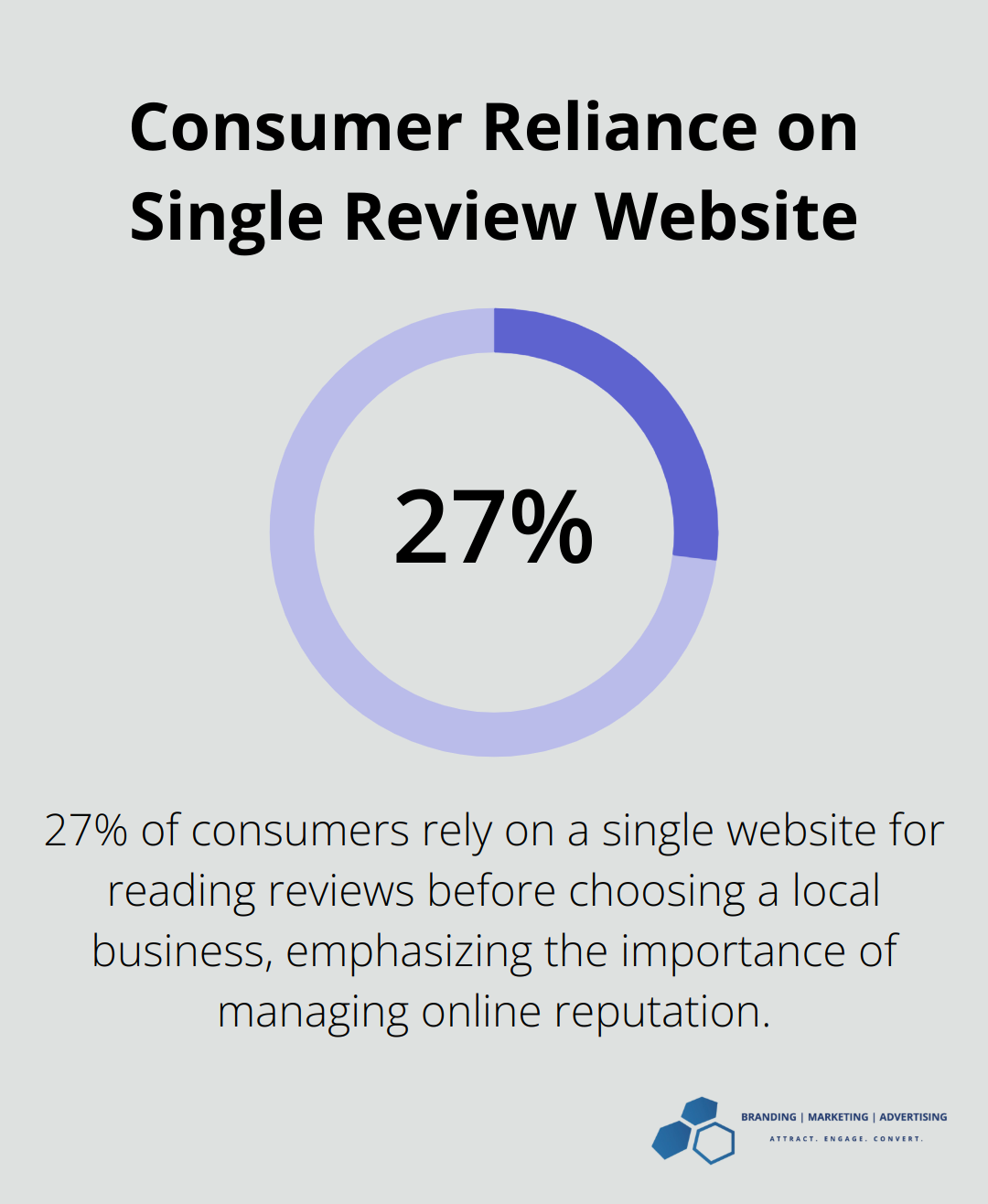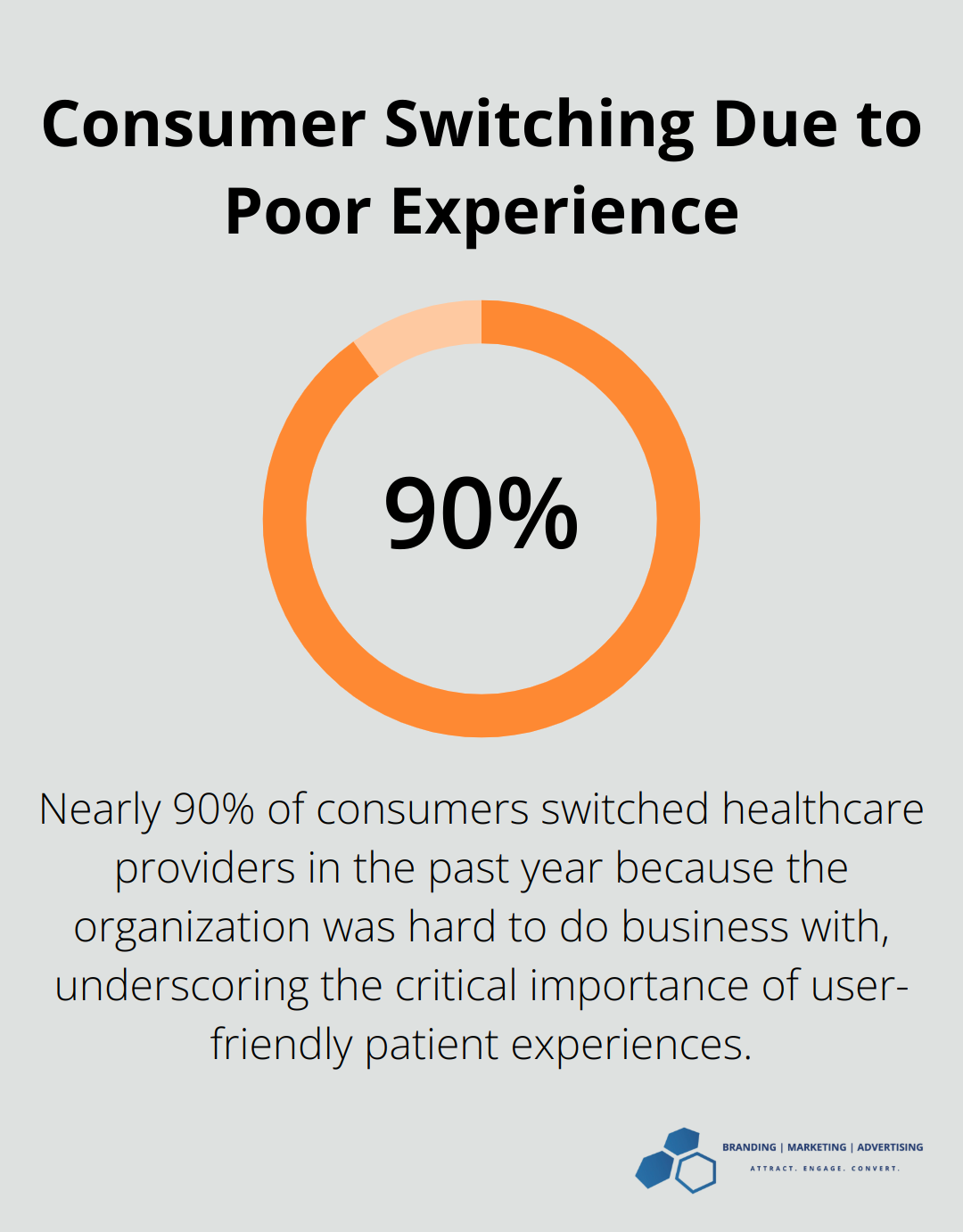How to Create an Effective Health Care Marketing Strategy
At Branding | Marketing | Advertising, we understand the unique challenges healthcare providers face in today’s competitive landscape.
A well-crafted healthcare marketing strategy is essential for attracting and retaining patients, building trust, and growing your practice.
This blog post will guide you through the key elements of creating an effective health care marketing strategy, from understanding your target audience to implementing patient-centric tactics.
Who Are Your Patients: The Foundation of Healthcare Marketing
Identify Your Core Demographics
At Branding | Marketing | Advertising (BMA), we know that understanding your target audience forms the foundation of effective healthcare marketing. Start with a deep analysis of your current patients. What age groups do you serve most frequently? Are they primarily families, young professionals, or retirees? Consider factors such as income levels, education, and occupation. These details will shape your communication strategy and help you highlight the most relevant services.
For instance, if you run a pediatric dental practice in a suburban area, your target audience likely consists of parents aged 25-45 with young children. This insight should guide your marketing efforts towards family-friendly messaging and services that appeal to busy parents (think: flexible appointment times and child-friendly waiting areas).
Analyze Patient Behavior Patterns
Next, take a close look at how your patients interact with healthcare services. Do they prefer online booking or phone calls? Are they proactive about preventive care or more likely to seek treatment when issues arise?
A recent study found that online appointment scheduling (OAS) increases patient satisfaction and enables more efficient care. If your practice doesn’t offer this functionality, you’re missing out on a significant patient preference. At BMA, we’ve helped numerous healthcare providers implement user-friendly online booking systems, resulting in increased patient satisfaction and reduced no-show rates.
Conduct Meaningful Research
Don’t rely on assumptions. Conduct surveys and gather feedback directly from your patients. Use tools like SurveyMonkey or Google Forms to create quick, easy-to-answer questionnaires.
Ask about their healthcare priorities, communication preferences, and what factors influence their choice of provider. This firsthand data is invaluable for tailoring your marketing strategy.
One of our clients, a small family practice, discovered through a patient survey that 65% of their patients expressed interest in telemedicine options – a service they hadn’t previously considered offering. This insight led to the implementation of a successful telemedicine program, expanding their patient base and improving accessibility.

Stay Ahead of Evolving Needs
Patient needs and behaviors evolve, especially in the wake of events like the COVID-19 pandemic. We recommend updating your audience insights regularly to stay ahead of the curve. This proactive approach allows you to adapt your services and marketing strategies to meet changing patient expectations.
Leverage Data for Personalized Marketing
Once you’ve gathered this wealth of information about your patients, it’s time to put it to work. Use these insights to create personalized marketing campaigns that speak directly to your patients’ needs and preferences.
For example, if your data shows that a significant portion of your patients are young professionals concerned about preventive care, you might create a targeted campaign highlighting your practice’s focus on wellness and convenient appointment times (early mornings or late evenings).
At BMA, we’ve seen firsthand how this data-driven, personalized approach can dramatically improve patient engagement and acquisition rates. Our healthcare clients who implement these strategies consistently outperform their competitors in terms of patient growth and retention.
As we move forward, let’s explore how to translate this deep understanding of your patients into a strong online presence that attracts and retains the right audience for your healthcare practice.
Building Your Digital Healthcare Hub: A Patient-Centric Approach
The Power of a User-Friendly Website
Your website serves as the digital front door to your healthcare practice. It must provide a seamless user experience to attract and retain patients. A study by the Journal of Medical Internet Research aims to describe and compare the characteristics of patients in relation to their use of online appointment booking in general practice. This research underscores the importance of a discoverable and user-friendly website.
We prioritize mobile responsiveness in website design. With approximately half of global web traffic coming from mobile devices (according to Statista), your site must perform flawlessly on smartphones and tablets. A mobile-optimized website ensures that potential patients can easily access your information and services on the go.
User experience (UX) takes center stage in our design process. We create intuitive navigation structures with clear calls-to-action (CTAs) for appointment booking and practice contact. An easily accessible patient portal allows existing patients to manage their care efficiently, enhancing overall satisfaction.
Dominating Local Search Results
For healthcare providers, local search engine optimization (SEO) plays a vital role in attracting nearby patients. When potential patients search for “dentist near me” or “family doctor in [your city],” your practice should appear at the top of the results.
Start by optimizing your Google Business Profile. This free tool from Google proves essential for local visibility. Complete your profile with accurate contact information, business hours, and high-quality photos of your practice. (This simple step can significantly boost your local search rankings.)
Patient reviews on your Google Business Profile carry substantial weight. A BrightLocal study found that 27% of consumers said they only use one website for reading reviews before deciding to use a local business, which is up 4% on 2024’s findings. Positive reviews not only build trust with potential patients but also improve your local search rankings. (Implement a system to encourage satisfied patients to leave reviews.)

Engaging Patients on Social Media
Social media platforms offer unique opportunities to connect with patients and showcase your expertise. However, a strategic approach that maintains HIPAA compliance remains paramount.
Facebook and Instagram excel at sharing health tips, behind-the-scenes glimpses of your practice, and patient success stories (with proper consent). LinkedIn proves ideal for B2B networking and establishing thought leadership in your field.
Social media thrives on relationship-building, not just service promotion. Engage with your followers by responding promptly to comments and messages. This level of interaction fosters trust and can transform followers into patients.
Harnessing the Power of Content Marketing
Content marketing establishes your authority and builds trust with potential patients. Create valuable, informative content that positions you as an expert in your field and addresses common patient concerns.
Start a blog on your website to share in-depth articles on health topics relevant to your practice. Use keyword research to identify topics your potential patients actively search for online.
Video content continues to gain popularity and effectiveness in healthcare marketing. Short, informative videos explaining common procedures or offering health tips can be shared across your website and social media platforms. A Wyzowl study found that 84% of people say they’ve been convinced to buy a product or service by watching a brand’s video.
Monitoring and Adapting Your Digital Strategy
The digital landscape evolves constantly, and your online strategy must keep pace. Regularly monitor your website analytics, social media engagement, and patient feedback to identify areas for improvement.
Use tools like Google Analytics to track website traffic and user behavior. Pay attention to metrics like bounce rate, time on site, and conversion rates. High bounce rates on certain pages may indicate that the content doesn’t meet user expectations or the page presents navigation difficulties.
Social media analytics provide insights into which types of content resonate most with your audience. Use this information to refine your content strategy and improve engagement.
Building a strong online presence requires consistent effort and a willingness to adapt to changing patient needs and digital trends. With the right strategy and execution, your digital presence becomes a powerful tool for growing your healthcare practice and improving patient care.
As we move forward, let’s explore how to implement patient-centric marketing tactics that will set your healthcare practice apart from the competition.
Personalizing Patient Experiences: The Healthcare Marketing Advantage
Crafting Content That Resonates
We understand that personalized marketing transforms healthcare practices. It creates meaningful connections that foster loyalty and improve health outcomes. Our approach starts with understanding patients’ unique concerns and preferences. We segment patient bases and create targeted content for each group. For example, a cardiology practice might develop separate content streams for patients managing chronic conditions versus those seeking preventive care.
A survey found that nearly 90% of consumers who switched healthcare providers in the past year did so because the organization was hard to do business with. This fact underscores the importance of delivering relevant, personalized content across all touchpoints.

One effective strategy involves the creation of condition-specific landing pages on your website. These pages should address common questions and concerns, provide valuable resources, and offer clear next steps for scheduling appointments or consultations.
Email Marketing: A Powerful Patient Engagement Tool
Email remains an effective tool for patient engagement when used strategically. We implement email campaigns that boost patient retention and satisfaction.
The process begins with email list segmentation based on factors like patient age, health conditions, and appointment history. This allows for the sending of targeted information that’s truly relevant to each recipient.
A pediatric practice could send age-appropriate developmental milestone information to parents, while a dermatology clinic might share seasonal skincare tips tailored to different skin types.
Automated email sequences can improve patient adherence to treatment plans.
(It’s important to note that all emails must remain HIPAA-compliant by avoiding any protected health information in the content.)
The Rise of Telemedicine and Virtual Care
The COVID-19 pandemic accelerated telemedicine adoption, and patients now expect these convenient options.
The implementation of a robust telemedicine program extends beyond technology. It requires the integration of virtual care into your overall patient experience. This includes:
- Staff training to provide excellent customer service in virtual settings
- Clear patient communication about when and how to use telemedicine services
- Seamless transition between in-person and virtual care
Data-Driven Hyper-Personalization
The future of healthcare marketing lies in hyper-personalization powered by data analytics. The analysis of patient data (while maintaining strict HIPAA compliance) allows for the prediction of individual health needs and tailored outreach.
A diabetes management clinic could use predictive analytics to identify patients at risk of complications and proactively reach out with preventive care recommendations.
The development of HIPAA-compliant data analysis tools helps practices uncover valuable insights without compromising patient privacy. This enables highly targeted marketing campaigns that resonate with patients on a personal level.
The implementation of these patient-centric marketing tactics requires a strategic approach and ongoing refinement. It’s not a one-size-fits-all solution, but a continuous process of learning and adapting to patients’ evolving needs.
Personalization stands as the key to standing out in a crowded marketplace. Whether through tailored content, strategic email campaigns, or innovative telemedicine solutions, putting patients at the center of marketing efforts drives long-term success for healthcare practices.
HealthcareMarketing #PatientExperience #Telemedicine #PersonalizedCare #DigitalHealth
https://bestbma.com/how-to-master-strategic-health-care-marketing/https://bestbma.com/optimizing-your-healthcare-website-for-mobile-users/https://bestbma.com/how-to-create-effective-health-care-marketing-strategies/https://bestbma.com/how-to-market-your-healthcare-organization-effectively/
Final Thoughts
An effective healthcare marketing strategy requires a deep understanding of your target audience and a strong online presence. You must identify core demographics, analyze patient behavior patterns, and conduct meaningful research to establish a successful marketing approach. A user-friendly website, local SEO strategies, and social media platforms attract and retain patients in the digital landscape.
Personalized patient experiences through tailored content, email marketing, and telemedicine solutions differentiate your practice from competitors. Data-driven hyper-personalization enables predictive outreach and targeted campaigns that resonate with patients individually. The digital landscape and patient needs evolve constantly, necessitating continuous improvement and adaptation of your healthcare marketing strategy.
Professional assistance can make a significant difference for healthcare providers navigating digital marketing complexities. Branding | Marketing | Advertising specializes in creating comprehensive healthcare marketing strategies tailored to your practice’s unique needs. Our team of experts can help you implement effective marketing tactics, optimize your online presence, and grow your practice while you focus on providing exceptional patient care.












